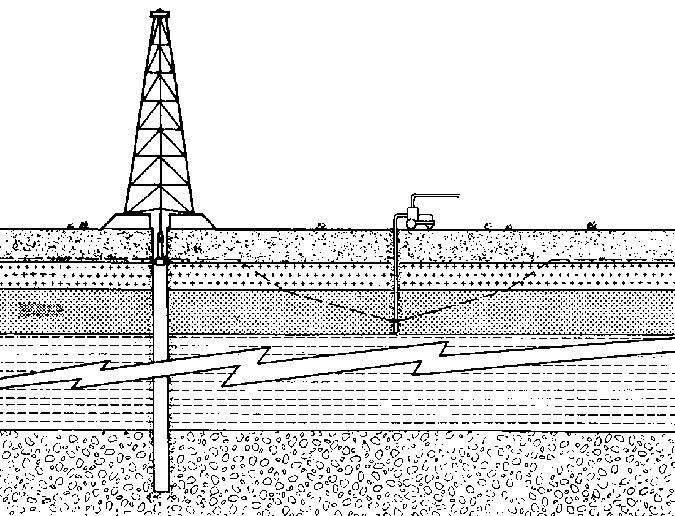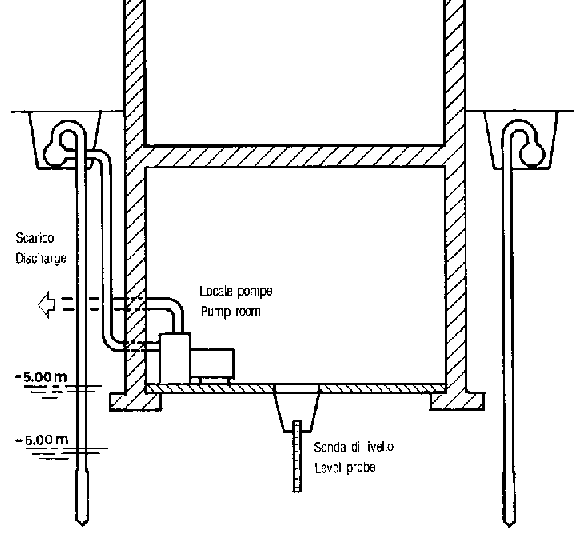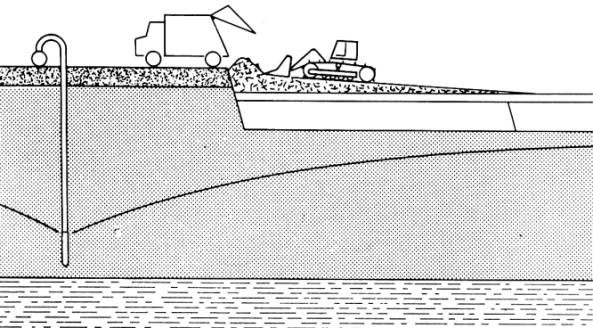
Wellpoint system applications
The most widespread application of the wellpoint system is found in the construction field to obtain a temporary lowering of the water table in the execution of excavations for:
– underground basements;
– sewer collectors and lifting stations;
– pipelines, oil pipelines, gas pipelines, power lines;
– irrigation and reclamation.
However, the wellpoint system also lends itself to a series of particular applications resulting from specific studies and designs.
WATER SUPPLY FROM SURFACE PITCHES
The wellpoint system has found a wide use in the water exploitation of surface aquifers in plains and areas geologically characterized by alternations of fine alluvial soils. It is used because it has the advantage of allowing the exploitation of surface aquifers and, therefore, of constituting the alternative to the deep drilling necessary for the identification of interesting aquifers.
The use of the wellpoint system allows the exploitation:
– for industrial purposes;
– for domestic purposes;
– for agricultural purposes.

WELLPOINT PLANT FOR EXCEPTIONAL FLAT LEVELS CONTROL
There are areas of the national territory consisting mainly of alluvial banks with underground hydraulic regime characterized by strong seasonal water table excursions, generally determined by the concomitance of various factors such as rainfall, thaw, irrigation. These level rises (reaching in many cases also unexpected exceptional values) can cause significant inconvenience to buildings and artifacts that were not in the presence of an aquifer at the time of construction. In other cases, as in the example in the figure, the wellpoint system is conceived as a real emergency system capable of automatically intervening under the impulse of level probes inserted in a control piezometric tube.

WELLPOINT SYSTEMS FOR IRRIGATION
The problem of water supply for irrigation has always been solved by taking the necessary water from deep wells or canals and canals. The water is then brought to the place of use with piping systems, sometimes with high costs. Some valuable crops develop mainly on land close to the sea and require water with a well-defined chemical concentration and temperature.
In suitable stratigraphic and hydrogeological conditions, it was possible to carry out supplies by means of the wellpoint system.

WELLPOINT FOR SEA TAKING OF DESALINATION PLANTS
Numerous projects and plants have been implemented to desalinate sea water. Generally, these projects are activated in arid areas and the supply of sea water is resolved with the construction of a jetty that allows for access to the sea. Especially in Mediterranean basins, however, characterized by shallow and very extensive waters, it is necessary to execute pontoons of enormous size with consequent costs. The presence of large aggregates of marine algae in the shallows is a further problem for traditional sea intakes. Also in these cases, wellpoint systems were studied and built as an alternative, which, installed either on the beach or even in submarine conduits, made it possible to solve the problem with satisfactory technical and economic advantages.

WELLPOINT PLANT FOR CONTROLLED LANDFILLS
The problem linked to the disposal of municipal solid waste and sewage sludge has seen a consolidation in the use of the “controlled landfill” method for technical and landscape reasons. For lowland areas, which have the level of the aquifer close to the ground level, when designing a controlled landfill it is necessary to avoid contact between waste and groundwater. This condition must be respected until the completion of the construction and waterproofing operations, or until the end of the processes of waste mineralization.
The wellpoint system is a valid and convenient method for solving the problems seen above, without resorting to structural solutions or fixed works of high unit value.


